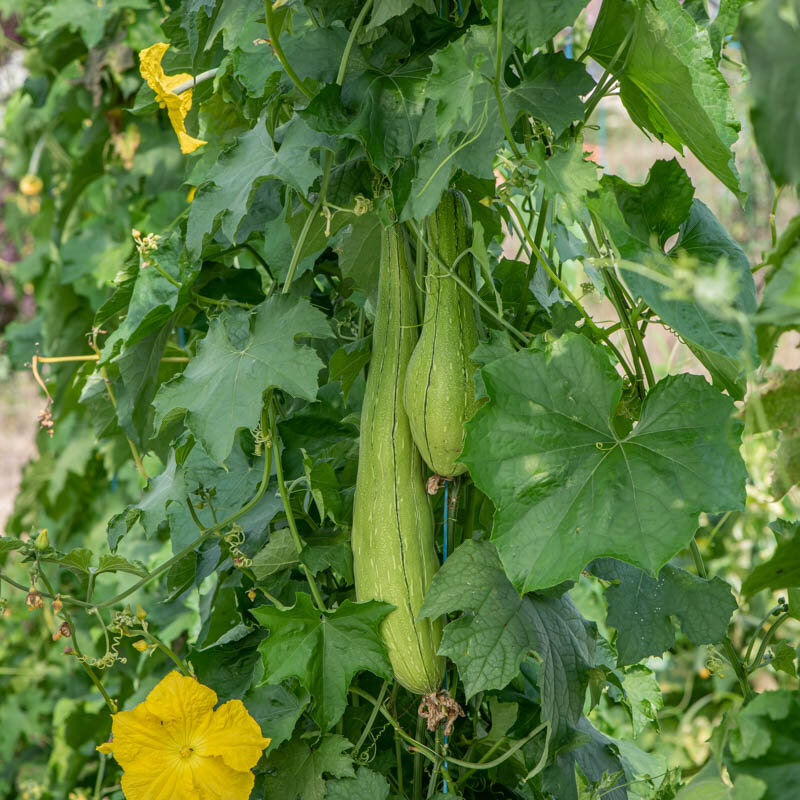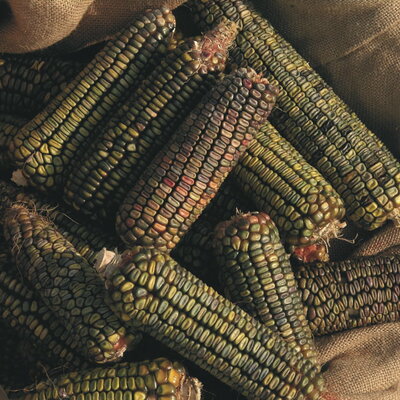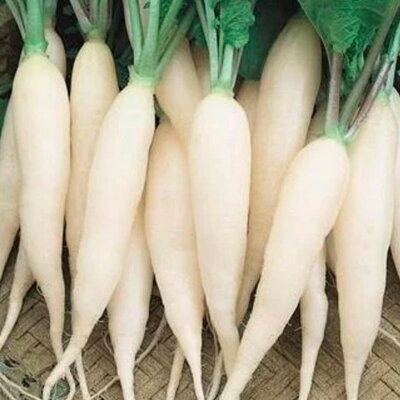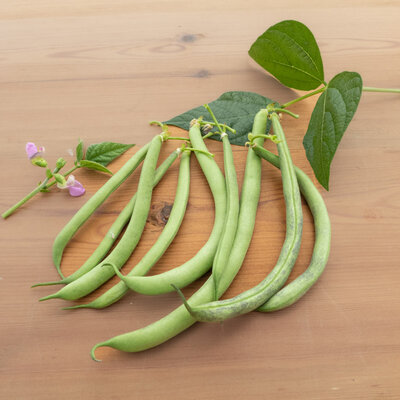Sponge Gourd - Luffa
This creeping or climbing species produces cylindrical fruits 20 to 40 cm long. Much appreciated in Asian cuisine, the young fruits are eaten like zucchini. The fibers of the ripe, dried fruit serve as a vegetable sponge.
This plant, native to India, is also known as "vegetable squash" or "vegetable sponge".
What are the characteristics of the Luffa cylindrica plant?
The Luffa cylindrica plant is a species of runner or climbing gourd in the Cucurbitaceae family, native to India. It forms a vigorous vine with tendrils and produces long, green fruits 20 to 40 cm long, with fibrous, white flesh. Although they can be picked very young for use in cooking, they are mainly cultivated for domestic and therapeutic use, hence the name "vegetable sponge gourd". They remove dirt and dead skin and promote blood circulation. In this case, the fruits are harvested ripe for drying.
When and how to sow Luffa cylindrica - Vegetable Sponge seeds?
Luffa seeds are sown from March to April in pots on the surface, but can also be placed directly in the ground once the garden soil has warmed up. This plant can take up to 200 days to grow, and requires constant warmth. It stops growing if the temperature drops below 15°C, and dies at 5°C.
Soak Luffa seeds in lukewarm water for 24 hours to facilitate germination. Place the cups indoors under a light source or in a heated greenhouse, at a minimum temperature of 18°C. Keep the substrate moist until the Luffa seeds have emerged. Transplant into rich, well-drained soil, in the garden or greenhouse, when plants have 4-5 true leaves and temperatures no longer drop below 15°C.
For direct sowing, wait until after the last frosts and choose a sunny spot. Space plants at least 1 m apart in all directions. To obtain beautiful vegetable sponges, place a trellis at the time of transplanting.
When to harvest Luffa cylindrica - Vegetable sponge?
Harvesting takes place from July to November. If intended for cooking, the fruit can be prepared in the same way as cucumbers or zucchinis: raw, sautéed, steamed or in soup. To be eaten, the fruit must be picked very young and green, when it is less than 15 cm long. Once split, it becomes too bitter and is best used to make a vegetable sponge.
How do I make a Luffa sponge?
To make a sponge, Luffa squash must be picked when ripe, when the stalk dries out and the skin turns brown. They then give off a dry sound when shaken. You can also wait for temperatures to drop below 10°C. Be careful not to tear off the fruit, but cut as close as possible to the stem.
- Dry the empty squash in a dry, well-ventilated place;
- Cut off one end to release the Luffa seeds;
- Remove the brown skin from the fruit.
Simply dampen the resulting sponge to take advantage of its exfoliating properties. Rinse and leave to dry after each use.
How do I harvest Luffa seeds - Vegetable sponge?
Luffa seeds are harvested when the fruit is ripe. Simply open and shake the fruit to collect the seeds. One gram of seed contains around 20 seeds. Germination of this squash is slow and sporadic if optimum conditions are not met. The average germination period is 5 years.
These products may also be of interest to you
in bucket, in the ground
Sow in pots, under light cover, at a minimum temperature of 20°C. Keep moist until emergence. When plants have 4 to 5 leaves, prick out into well-warmed soil, 1 m apart in all directions. You can also sow directly into well-warmed soil, 1 m apart in all directions.
March, April
July, August, September, October, November
in the ground, in the greenhouse
sunny
medium
reheated, drained
Luffa aegyptiaca
12 seeds
Green
From 200 to 400 cm
From 20 to 40 cm
runner
rowing
Inde















